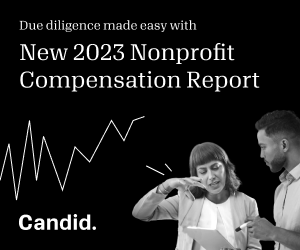How philanthropy can curb the mental health crisis facing our young people

The mental healthcare system in the United States needs a dramatic intervention. At best, our system is fragmented, siloed, and plagued by misaligned incentives that only deepen existing problems; at worst, critics might conclude that providing timely, effective mental health care to people in need is not its goal. Structural fixes are desperately needed to ensure equitable access to quality mental health care for everyone who needs it.
This includes our young people, who now face a worsening mental health crisis, exacerbated by a perfect storm of stressors including social unrest, acts of violence, bias and oppression directed at people of color and LBGTQ+ individuals, and the loss, grief, and isolation imposed by the COVID-19 pandemic. This crisis urgently needs to be addressed, even if our mental health system is not designed to help everyone who needs it—which means that we must pursue all viable options. And partnerships with philanthropic organizations will be critical in turning the tide of this crisis.
In this country, almost one in three young adults between the ages of 18 and 25 and one in four teenagers experience a mental health disorder such as depression or anxiety. However, fewer than half of young people who needed mental health care in 2020 received it. Even for those who are brave enough to seek help, it is still heartbreakingly difficult to get the timely, affordable care they need.
The reasons are clear. Almost four in 10 Americans (149 million people) live in areas where there is a shortage of mental health professionals. The Centers for Disease Control and Prevention’s National Health Interview Survey calculated that 31 million Americans don’t have health insurance, and even those with insurance often can’t get help because most behavioral care specialists are out-of-network or do not accept insurance. A behavioral health office visits is more than five times more likely to be out-of-network than a primary care visit. Finding a mental health provider with whom teens and young adults of color identify and who understand their cultural context is an additional challenge. For example, 83 percent of psychologists in the U.S. are white and 3 percent are Black.
Even when mental health care is covered by insurance, it is frequently more expensive than physical health care under many health plans. If you don’t live in a part of the country with adequate numbers of behavioral health care specialists, and you are not wealthy enough to pay cash or afford higher out-of-pockets costs, your pursuit of mental health care for yourself or a loved one is likely to be a nightmare.
Here is where philanthropic partners can make a direct impact: By directing funding to organizations and programs that support mental health in schools, other youth-serving organizations, and communities, philanthropists can support preventative measures through the creation of mental health safety nets where young people are. Such efforts help equip young people to navigate mental health challenges for themselves or a friend and increase the chances that someone in distress will be noticed and assisted in obtaining the care they need.
Philanthropists should also consider backing programmatic sponsors that are collaborating with other organizations to improve equitable access to mental health care. This means that their contributions will be essentially exponential in impact, create added value, and directly break down the silos that cause duplication of effort. Because of collaboration’s potential to drive better communication and coordination of effort, The Jed Foundation (JED)—the organization that I lead—joined the Path Forward for Mental Health and Substance Use coalition, a private-sector initiative designed to drive market-based improvements in behavioral health treatment and health equity for all Americans. We know that dramatic and sustainable impact can be made when we work together.
Philanthropists will want to make sure that their gifts will be put to immediate use and make an impact. While many nonprofit organizations seek to build endowments to support long-term financial goals, to address the mental health crisis our young people face, philanthropy is needed for the implementation of near- and medium-term strategies and plans to strengthen our mental healthcare systems.
Philanthropists should systematically review what they are funding to ensure that the initiatives they support align with the urgency of our public mental health goals, have a plan with measurable goals and a reasonable chance of success, and feature collaboration that fosters communication, coordination, and synergy and provide incentives that help align all stakeholders around the shared goal of improving equitable access to care.
Philanthropist Mackenzie Scott recently made a number of gifts to a group of mental health-focused nonprofits—including JED, which received a $15 million grant—to make a big and lasting impact on the field. Her giving exemplifies how careful vetting of potential recipients and review of the compatibility of their goals and philosophies is a critical step in funding action that will effectively help young people with mental and emotional health challenges through the current crises.
Philanthropists are vital partners in helping organizations like mine to make both immediate and lasting impacts on the mental health of the youth we serve. Right now, when the design of the mental health system itself is a big part of the problem, philanthropies are essential partners; their support will be the lever that helps us make the changes needed to address today’s youth mental health crisis.
John MacPhee is CEO of The Jed Foundation, a nonprofit that protects emotional health and prevents suicide for our nation’s teens and young adults, giving them the skills and support they need to thrive today…and tomorrow.






